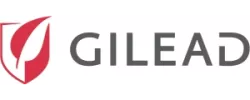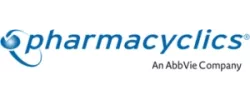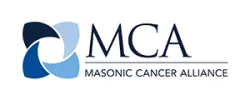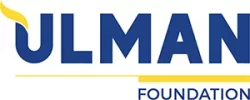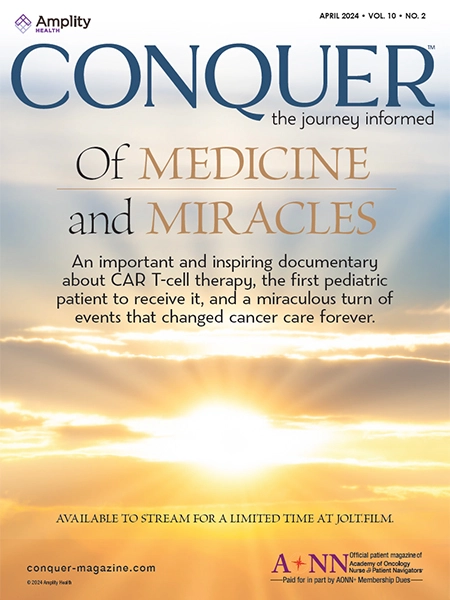- Preconference Sessions Offered Opportunities for In-Depth Exploration
- Blurred Lines Between Germline and Somatic Testing for Precision Medicine
- Keynote Session – Living Life Beyond Cancer
- Caution: Metrics Can Be Addicting
Preconference Sessions Offered Opportunities for In-Depth Exploration
Focused explorations and interactive sessions provide attendees some of the richest experiences of the conference. For the 2021 annual conference, navigators could select from these topics of interest targeted to navigators: Nutrition, Survivorship, Palliative Care, and Starting/Maintaining a Navigation Program.
The half-day events are designed to provide a deeper understanding of a significant aspect of oncology navigation and are scheduled to provide an opportunity to take advantage of 2 of these outstanding sessions.
Blurred Lines Between Germline and Somatic Testing for Precision Medicine
Genetics counselor Leigha Senter-Jamieson, MS, CGC, outlined some of the common issues that navigators encounter when working with cancer patients who are at the diagnostic stage and undergoing genetic testing. Because tumor genomic testing is becoming important for treatment decisions among a growing number of patients, navigators should be able to help patients understand the implications. Ways in which navigators can help remove barriers to genetic testing, counseling, and treatment were discussed.
Ms Senter-Jamieson gave a quick review of germline and somatic (genomic) testing. Germline mutations appear in reproductive cells (egg or sperm) and are transmitted to every cell. Referred to as “hereditary” or “inherited” mutations, they are usually detected in healthy people through tests of the blood or saliva. Somatic (genomic) mutations occur after conception. In cancer, they usually occur in the tumor cells. Mutations can inform therapeutic decisions, and germline testing, which identifies inherited mutations, typically has implications for other family members as well.
In addition to providing patients with clarification on the terms used in precision medicine, navigators can manage patient expectations about what precision medicine can and cannot do. Ms Senter-Jamieson noted that precision medicine is a somewhat “flashy” term that appears in headlines, but it is often misunderstood. Patients who hear sensationalized information from the media may receive conflicting messages about dramatic new treatments. As a result, misinformed patients may end up believing that precision medicine is financially toxic on one hand, or is entirely life-changing on the other. Patients often experience disappointment after testing if it is found that precision medicine treatments do not exist for their specific cancer.
In the question-and-answer period, the topic of financial resources was addressed. Ms Senter-Jamieson said that, in many cases, insurance does cover testing, and there are some other generous sources for funding. Funding may be available through the testing laboratories, and navigators can help ensure patients have access to financial sources. Because the programs are subtly different, navigators can see that patient forms are completed properly, as it is often complicated.
When asked about sources of information for patients, she noted that some advocacy groups, such as the American Cancer Society, NCCN, and an organization that she is involved in, known as FORCE, have very good patient-facing materials that define many of the terms used in genetic testing and should be made available to patients.
Keynote Session – Living Life Beyond Cancer
Tamika Felder was only 25 years old and just starting out in a career in broadcasting when cancer entered her life in a radical way that included losing her fertility before she had the opportunity to start a family. How she went from survivor to thriver was one of the themes in her powerful and inspiring presentation.
Ms Felder spoke movingly about how frightened she was as her comfortable life was turned upside down and how crucial were the navigators and others, who she calls her “partners in purpose,” who helped her through this difficult time in her life. “I get to say I survived cancer because I had wonderful people in my corner,” she said.
And because “cancer doesn’t quarantine” navigators and other healthcare providers have been there to help patients through their cancer journey—a journey made even more complicated by the pandemic. And there is no end in sight, particularly as it is anticipated that there will be an influx of cancer diagnoses with more late-stage diagnoses ahead. Ms Felder reflected on how navigators give so much of themselves as they “fill the cups of others.” This, she said, makes it even more crucial that they take care of themselves and understand themselves as carers, especially now when they are expected to give so much.
Using humor and video clips, she encouraged navigators to find their “why” and consider not just “what” they do, but “why” they do it. They can use this insight as a source of inspiration. Today, Ms Felder heads an organization she founded, Cervivor, that supports and advocates for patients with cervical cancer.
Caution: Metrics Can Be Addicting
Recognizing that the topic of metrics can be perceived as dry or even somewhat intimidating, this panel injected some tongue-in-cheek humor and invited attendees into the “weeds” of doing metrics. The panelists, Danelle Johnston, RN, MSN, OCN, HON-ONN-CG; Tricia Strusowski, RN, MS; Kristina Rua, MSN, RN, OCN, ONN-CG; and Jamie Callahan, BSN-RN, OCN, CBCN, suggested it is possible that you are already doing metrics as a regular part of your job, but because the term is misunderstood, you might not realize that what you are doing is, in fact, “metrics.”
Indeed, collecting metrics has become an essential part of navigators’ work. Today, more than 70% of the conference respondents reported that they consider metrics part of their core competencies—this is a 40% increase over past polling.
Some of the stated objectives of this session were to provide a fun and interactive panel that reviewed the background of the AONN+ navigation metrics program; identify opportunities where navigators might partner with key stakeholders; discuss developing a partnership with the IT Department; and review tools that navigators need to create or enhance their metrics collection program.
Danelle Johnston opened by explaining how and why the need for a metrics tool emerged, and she gave a brief history of the research and collaboration that went into creating it. She also noted that when the 35 key metrics were developed, it was not the intention that each program would collect all 35, but rather they were meant to demonstrate the range of possible activities that a practice could identify and collect.
If navigators are in the process of establishing a metrics program, or improving an existing one, it is important to remember that it can start small—with perhaps 3 or 4 metrics that demonstrate the function of the navigator and quantitatively show the value of the program. Once benchmarks are established, they can also be used to show improvement over time.
One of the persistent barriers to success in collecting metrics lies in the IT realm. Creating a program to collect data usually requires working closely with and communicating effectively with the IT professionals. It is imperative that your goals and objectives are conveyed to successfully collect data and generate reports.
“What are we going to find?” This fear of what the numbers will reveal is always a question in the back of the mind, said Jamie Callahan. What if the numbers show that the navigation program is not providing the value that was hoped for or promised? Even this information is beneficial, she explained, as it can be used to identify weak spots and drive change.
The highly interactive and comprehensive session included word clouds and audience polling, and ended with a series of focused questions that delved deeper into the nuts and bolts of building and maintaining a metrics program.





